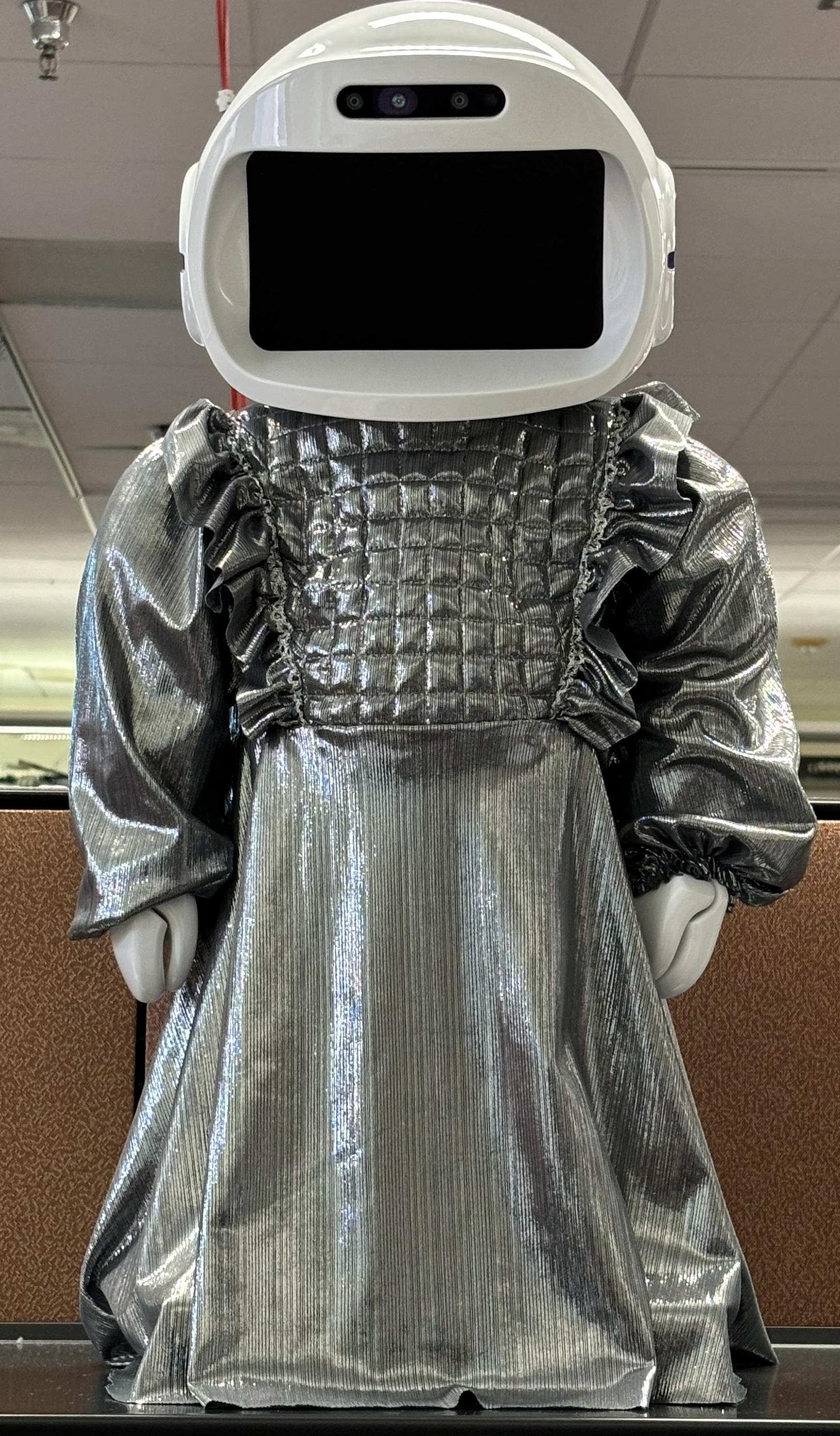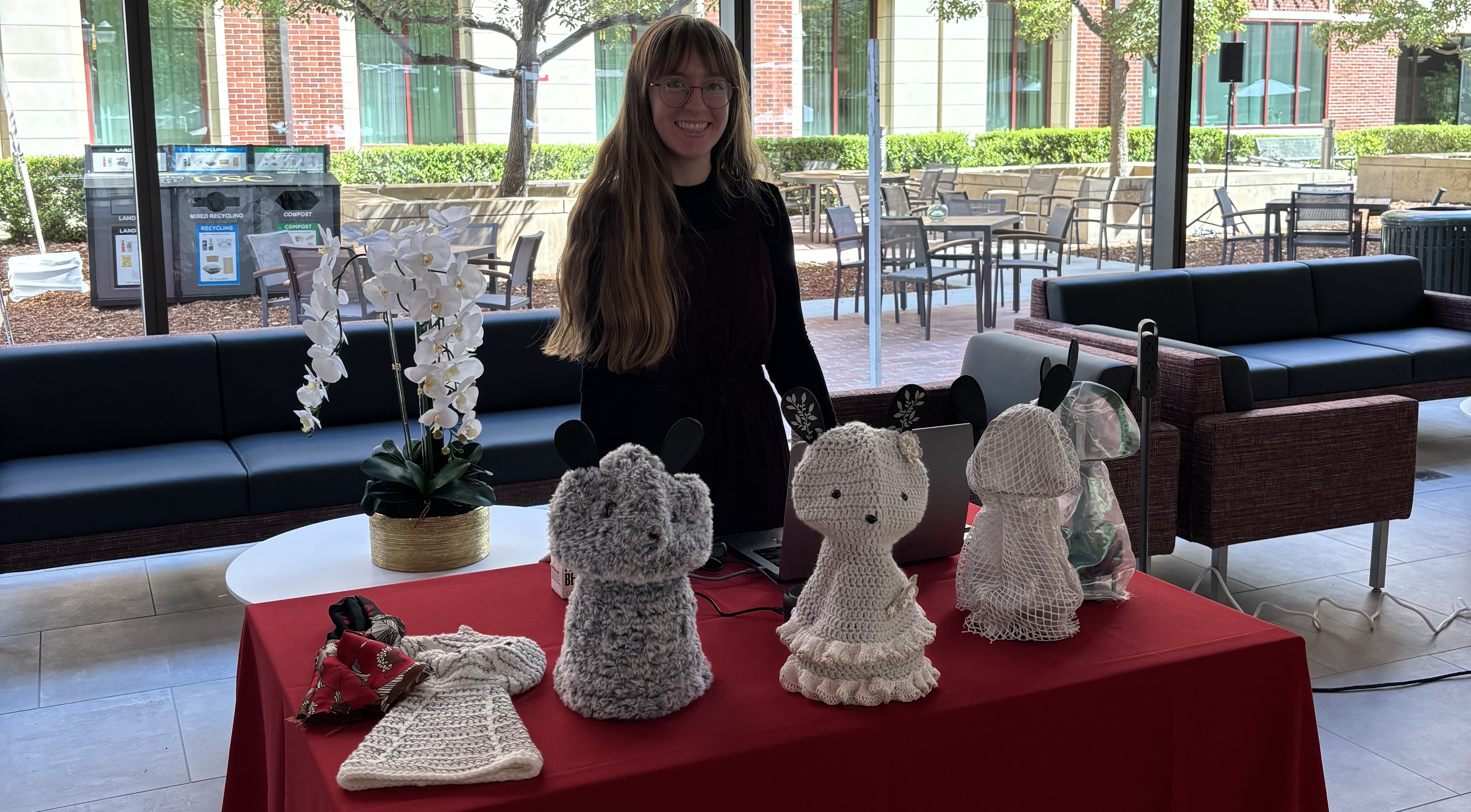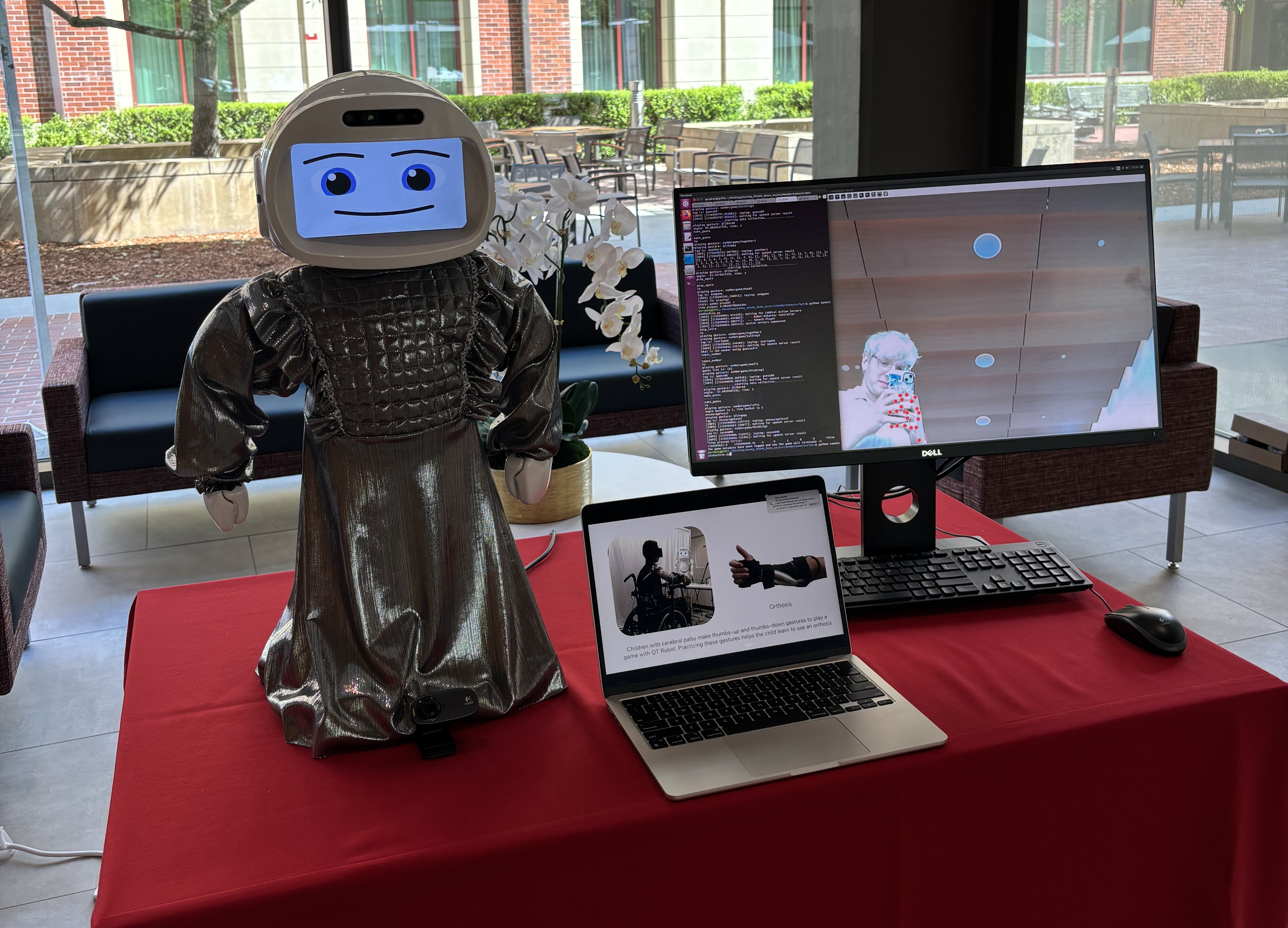Fashion for a Robot Meeting with USC Building Donors
The Ginsburg Hall for Human-Centered Computation
Around 2022–23, The University of Southern California (USC) announced a new computer science building: The Ginsburg Hall for Human-Centered Computing. The goal was to complete the building for the Summer of 2024. By September, the building was mostly complete and USC invited the Ginsburgs to tour the new building that they had donated and have an official ribbon-cutting ceremony. The theme of the event was “Platinum”.
The media department reached out to several robotics labs to highlight the human-centered robots that would soon inhabit the building. For example, HECTOR, a humanoid robot from the Dynamic Robotics and Control Laboratory delivered the scissors to cut the ribbon. The Interaction lab offered to show some robot demos that showed how socially assistive robots can help children with cerebral palsy through exercise support and students with anxiety through breathing exercises. To align with the theme of the ceremony, my labmate Amy O’Connell and I decided to create some platinum outfits to help our demos align with the ceremony’s theme.
Designing a Platinum Dress for Robots
My goal for this event was to practice pattern making for morphologies that are different from my own. Admittedly, the QT-Robot is humanoid, however, its proportions are significantly different from my own so this is a reasonable place to start. Given the nature of the event being relatively formal, I searched for design inspiration in past runway shows from fashion houses. I was particularly struck by a piece from the 2022 Balmain runway, which was themed around space. The gown was made out of a platinum fabric that reminded me of the foils used in satellites. It felt very techno-optimistic, which I thought suited the event well.

The 2021 Fall/Winter Balmain dress that inspired the dress's design.
I didn’t anticipate receiving funding for this side project so I got really crafty with materials. I was able to find some stretchy metallic fabric in the LA Fashion district, but given that I was going to likely iterate on the pattern I create, I wanted to find some low-cost alternatives to create mocks of the dress. To create the pattern, I used a roll of unwaxed parchment paper to draw general shapes that I could cut out and use as a template. Typically people who sew would use a muslin, but even that was outside of my budget. Luckily I found a crafty alternative at the local grocery store: disposable tablecloths. Often these come in a roll for large family barbecues and are made from a flexible plastic that I found quite easy to sew through. The downside is that any tensile stress stretches the plastic out and destroys the seams. This doesn’t really matter for mocking designs, but it would be terrible if you were really hoping to wear the plastic mock in daily life.

Preparing the mock dress.
QT Robot was designed to interact with children, however this event was primarily for adults. To modify QT’s embodiment to align with the setting, I used a few sewing tricks. I used quilt batting to pad out the shoulders to have less child-like proportions since this event would primarily be adults instead of children interacting with the robot. I also made the dress slightly longer than QT’s legs, and placed QT on top of a book so the robot’s legs would appear slightly more proportional to an adult’s legs.

QT's dress with embodiment modifications.
I tested the robot to make sure heat dissipation was not a major problem. It got slightly warm after a few hours, but it was well within safe operating temperatures. This is an important consideration for robots wearing clothes, as the electrical engineers don’t expect you to be putting extra heat insulation on the robot in the general case.
Showing the Robots Off
On the day of the event, Amy brought in some Blossoms that had some lovely platinum outfits, and I set up the newly outfitted QT Robot to play the thumbs-up thumbs-down number guessing game with passersby.

Amy with the Platinum Blossoms.

QT Robot in Ginsburg Hall.
Overall, people enjoyed the personality that these clothes added to the robot. I believe that these additions elicited interaction with the robot, but we will need to run a controlled experiment one day to verify this hypothesis :).
